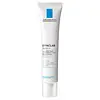What's inside
What's inside
 Key Ingredients
Key Ingredients

 Benefits
Benefits

 Concerns
Concerns

 Ingredients Side-by-side
Ingredients Side-by-side

Water
Skin ConditioningGlycerin
HumectantDimethicone
EmollientIsocetyl Stearate
EmollientNiacinamide
SmoothingIsopropyl Lauroyl Sarcosinate
Skin ConditioningSilica
AbrasiveAmmonium Polyacryloyldimethyl Taurate
Emulsion StabilisingMethyl Methacrylate Crosspolymer
Potassium Cetyl Phosphate
EmulsifyingSorbitan Oleate
EmulsifyingZinc PCA
HumectantGlyceryl Stearate Se
EmulsifyingIsohexadecane
EmollientSodium Hydroxide
BufferingMyristyl Myristate
Emollient2-Oleamido-1,3-Octadecanediol
Skin ConditioningAluminum Starch Octenylsuccinate
AbsorbentMannose
HumectantPoloxamer 338
EmulsifyingDisodium EDTA
Capryloyl Salicylic Acid
ExfoliatingCaprylyl Glycol
EmollientVitreoscilla Ferment
Skin ConditioningXanthan Gum
EmulsifyingPolysorbate 80
EmulsifyingAcrylamide/Sodium Acryloyldimethyltaurate Copolymer
Emulsion StabilisingSalicylic Acid
MaskingPiroctone Olamine
PreservativeParfum
MaskingWater, Glycerin, Dimethicone, Isocetyl Stearate, Niacinamide, Isopropyl Lauroyl Sarcosinate, Silica, Ammonium Polyacryloyldimethyl Taurate, Methyl Methacrylate Crosspolymer, Potassium Cetyl Phosphate, Sorbitan Oleate, Zinc PCA, Glyceryl Stearate Se, Isohexadecane, Sodium Hydroxide, Myristyl Myristate, 2-Oleamido-1,3-Octadecanediol, Aluminum Starch Octenylsuccinate, Mannose, Poloxamer 338, Disodium EDTA, Capryloyl Salicylic Acid, Caprylyl Glycol, Vitreoscilla Ferment, Xanthan Gum, Polysorbate 80, Acrylamide/Sodium Acryloyldimethyltaurate Copolymer, Salicylic Acid, Piroctone Olamine, Parfum
Water
Skin ConditioningIsononyl Isononanoate
EmollientGlyceryl Stearate
EmollientPentylene Glycol
Skin ConditioningCaprylic/Capric Triglyceride
MaskingPropanediol
SolventCetyl Alcohol
EmollientDimethicone
EmollientC9-12 Alkane
SolventPEG-75 Stearate
Butyrospermum Parkii Butter
Skin ConditioningCaprylyl Methicone
Skin ConditioningPhenoxyethanol
PreservativePolyacrylate Crosspolymer-6
Emulsion StabilisingSodium Hydroxide
BufferingButylene Glycol
HumectantPEG-100 Stearate
Tocopheryl Acetate
AntioxidantGlycerin
HumectantSilica
AbrasiveCeteth-20
CleansingSteareth-20
CleansingLecithin
EmollientCitric Acid
BufferingCoco-Caprylate/Caprate
EmollientHydroxyethyl Acrylate/Sodium Acryloyldimethyl Taurate Copolymer
Emulsion StabilisingSodium Phytate
Tetrahexyldecyl Ascorbate
AntioxidantDiethylhexyl Syringylidenemalonate
Skin ProtectingSqualane
EmollientAlcohol
AntimicrobialRetinol
Skin ConditioningPolysorbate 20
EmulsifyingSodium Benzoate
MaskingT-Butyl Alcohol
PerfumingPotassium Sorbate
PreservativePolysorbate 60
EmulsifyingOryza Sativa Bran Extract
Skin ConditioningBoswellia Serrata Extract
Skin ConditioningHoney Extract
HumectantPotassium Phosphate
BufferingAloe Barbadensis Extract
Skin ConditioningHydrolyzed Vegetable Protein
Skin ConditioningWater, Isononyl Isononanoate, Glyceryl Stearate, Pentylene Glycol, Caprylic/Capric Triglyceride, Propanediol, Cetyl Alcohol, Dimethicone, C9-12 Alkane, PEG-75 Stearate, Butyrospermum Parkii Butter, Caprylyl Methicone, Phenoxyethanol, Polyacrylate Crosspolymer-6, Sodium Hydroxide, Butylene Glycol, PEG-100 Stearate, Tocopheryl Acetate, Glycerin, Silica, Ceteth-20, Steareth-20, Lecithin, Citric Acid, Coco-Caprylate/Caprate, Hydroxyethyl Acrylate/Sodium Acryloyldimethyl Taurate Copolymer, Sodium Phytate, Tetrahexyldecyl Ascorbate, Diethylhexyl Syringylidenemalonate, Squalane, Alcohol, Retinol, Polysorbate 20, Sodium Benzoate, T-Butyl Alcohol, Potassium Sorbate, Polysorbate 60, Oryza Sativa Bran Extract, Boswellia Serrata Extract, Honey Extract, Potassium Phosphate, Aloe Barbadensis Extract, Hydrolyzed Vegetable Protein
 Reviews
Reviews

Ingredients Explained
These ingredients are found in both products.
Ingredients higher up in an ingredient list are typically present in a larger amount.
Dimethicone is a type of synthetic silicone created from natural materials such as quartz.
What it does:
Dimethicone comes in different viscosities:
Depending on the viscosity, dimethicone has different properties.
Ingredients lists don't always show which type is used, so we recommend reaching out to the brand if you have questions about the viscosity.
This ingredient is unlikely to cause irritation because it does not get absorbed into skin. However, people with silicone allergies should be careful about using this ingredient.
Note: Dimethicone may contribute to pilling. This is because it is not oil or water soluble, so pilling may occur when layered with products. When mixed with heavy oils in a formula, the outcome is also quite greasy.
Learn more about DimethiconeGlycerin is already naturally found in your skin. It helps moisturize and protect your skin.
A study from 2016 found glycerin to be more effective as a humectant than AHAs and hyaluronic acid.
As a humectant, it helps the skin stay hydrated by pulling moisture to your skin. The low molecular weight of glycerin allows it to pull moisture into the deeper layers of your skin.
Hydrated skin improves your skin barrier; Your skin barrier helps protect against irritants and bacteria.
Glycerin has also been found to have antimicrobial and antiviral properties. Due to these properties, glycerin is often used in wound and burn treatments.
In cosmetics, glycerin is usually derived from plants such as soybean or palm. However, it can also be sourced from animals, such as tallow or animal fat.
This ingredient is organic, colorless, odorless, and non-toxic.
Glycerin is the name for this ingredient in American English. British English uses Glycerol/Glycerine.
Learn more about GlycerinSilica, also known as silicon dioxide, is a naturally occurring mineral. It is used as a fine, spherical, and porous powder in cosmetics.
Though it has exfoliant properties, the function of silica varies depending on the product.
The unique structure of silica enhances the spreadability and adds smoothness, making it a great texture enhancer.
It is also used as an active carrier, emulsifier, and mattifier due to its ability to absorb excess oil.
In some products, tiny microneedles called spicules are made from silica or hydrolyzed sponge. When you rub them in, they lightly polish away dead skin layers and enhance the penetration of active ingredients.
Learn more about SilicaSodium Hydroxide is also known as lye or caustic soda. It is used to adjust the pH of products; many ingredients require a specific pH to be effective.
In small amounts, sodium hydroxide is considered safe to use. However, large amounts may cause chemical burns due to its high alkaline.
Your skin has a natural pH and acid mantle. This acid mantle helps prevent harmful bacteria from breaking through. The acid mantle also helps keep your skin hydrated.
"Alkaline" refers to a high pH level. A low pH level would be considered acidic.
Learn more about Sodium HydroxideWater. It's the most common cosmetic ingredient of all. You'll usually see it at the top of ingredient lists, meaning that it makes up the largest part of the product.
So why is it so popular? Water most often acts as a solvent - this means that it helps dissolve other ingredients into the formulation.
You'll also recognize water as that liquid we all need to stay alive. If you see this, drink a glass of water. Stay hydrated!
Learn more about Water